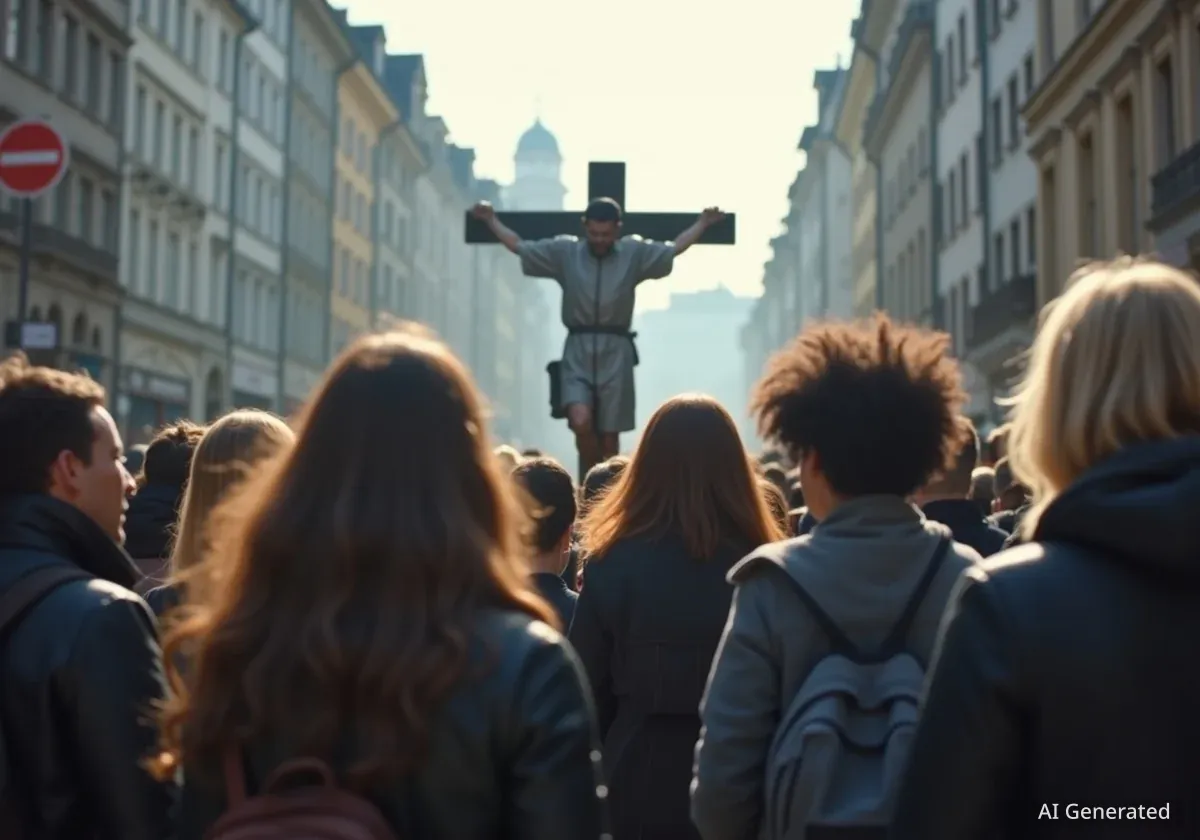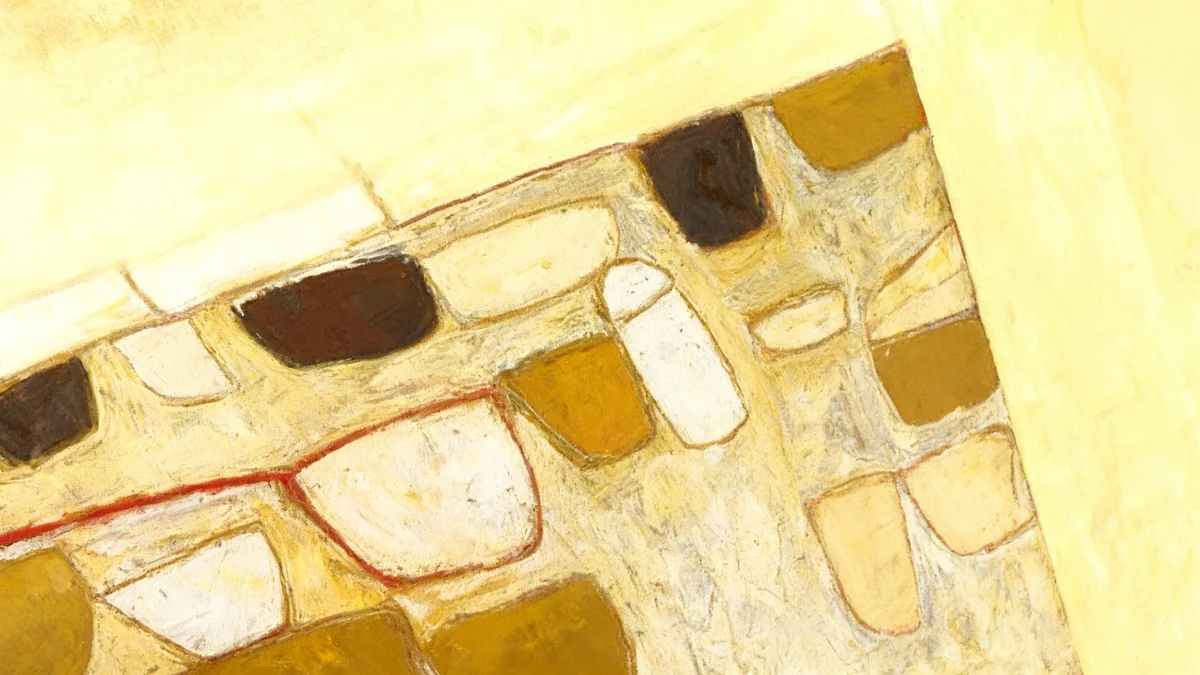Brazilian artist Erika Verzutti has spent two decades crafting sculptures that reinterpret everyday fruits into complex, anthropomorphic forms. Working from her São Paulo studio, Verzutti creates pieces in various materials, including clay, bronze, concrete, and papier-mâché. Her work often references art history while maintaining a unique, sometimes absurd, perspective on natural shapes.
Verzutti's artistic journey took a decisive turn around 2007 when she experienced a profound realization about the sculptural potential of fruit. This moment, she describes, led her to embrace her identity as a 'fruit sculptor,' a theme she has explored extensively in her global exhibitions.
Key Takeaways
- Erika Verzutti specializes in creating sculptures from fruit forms.
- Her work often blends natural shapes with references to art history.
- Verzutti's pieces are currently on display in Paris, including at Hôtel Balzac and Art Basel.
- She uses diverse materials like clay, bronze, and concrete.
- The artist sees her sculptures as having 'their own lives' once they leave her studio.
The Genesis of a Fruit Sculptor
Erika Verzutti, now 54, recalls a pivotal period around 2007. She was not a frequent cook, but she found herself observing the various items on her kitchen table. The imperfect shapes of fruits and vegetables sparked an idea.
"It felt like their imperfect forms might provide a new geometry that I could use," Verzutti explained while pouring coffee in her studio. "When this happened, it was a revelation, a form of salvation. I was going to become a fruit sculptor! This would be my thing that I could use forever."
This realization marked a significant shift in her artistic practice. She began to focus on these organic forms, transforming them into art that is both familiar and abstract.
Artistic Influences and Evolution
Verzutti's early work in this style, showcased in a 2011 exhibition at Fortes Vilaça gallery in Brazil, featured bronze gourds alongside concrete blocks. One notable piece involved a cast jackfruit with a drilled hole, and another displayed two dozen star fruits fused into a towering totem. These works demonstrated her immediate embrace of the fruit motif.
Her sculptures openly draw inspiration from various art historical movements and artists. Viewers can identify allusions to Picasso's surrealist sculptures, the monumental columns of Brâncuși, and the organic, amorphous figures created by Henry Moore and Barbara Hepworth. Verzutti integrates these influences into her unique visual language.
From São Paulo to Global Stages
Verzutti's studio is located on the first floor of a residential building in downtown São Paulo, Brazil's largest city. Just a few blocks away, a bustling street market offers piles of real melons and guavas, a constant reminder of her primary inspiration.
From this vibrant base, Verzutti's art has traveled widely. Her works have been featured in major international institutions:
- Centre Pompidou in 2019
- Nottingham Contemporary in 2021
- Museum of Art of São Paulo in the same year
These exhibitions highlight the global appeal and critical recognition of her distinctive sculptural approach.
"The sculptures have their own lives when they leave the studio, in museums, people’s houses, in bedrooms. It’s like seeing your baby out in the world." – Erika Verzutti
A Sculpture's Happy Home
One of Verzutti's small sculptures found an unusual, yet cherished, home. It belongs to James Moores, the Littlewoods heir and art collector. The piece resides in his kitchen in Shropshire, England, positioned next to a garden gnome and the salt and pepper shakers.
Verzutti believes this particular sculpture is content. "I think that my sculpture is happy there. It’s got a friend, it gets plenty of attention," she observed, highlighting her personal connection to her creations.
New Exhibitions in Paris
Erika Verzutti recently held an exhibition at LUMA Arles earlier this year. This month, her work returns to France for two significant events coinciding with Art Basel in Paris.
One exhibition, titled 'Sculptures Last Night,' is part of curator Julie Boukobza’s annual series 'Pourquoi Paris?'. This event takes place in a distinctive, intimate setting: room 103 at the Hôtel Balzac in Paris's eighth arrondissement.
Sculptures as Hotel Guests
Verzutti clarifies her artistic intent for the hotel exhibition. "I’m not making work for the hotel, a sculpture that is a bedside lamp or something," she stated. "No, the sculptures are guests of the hotel, they’ve checked into a hotel room that will otherwise remain the same."
The dozen pieces on display include a column of oversized bronze eggs, which will lie on the bed with the duvet disheveled. One of her 'painted ladies' sculptures—works in bronze and pigmented wax that vaguely resemble a feminine form—will gently entangle the larger piece. These arrangements suggest a narrative of a chaotic morning after.
"They are, I think, on the verge of breaking everything. I think it’s the day after the night before. The room is messy. There’s only a certain amount of time you can stay in a hotel before feeling nauseous, regardless of how nice it is." – Erika Verzutti
The 'Painted Lady' Series and Unexpected Inspirations
The 'painted lady' series is a recurring theme in Verzutti's work, with several notable versions:
- The Guggenheim in New York owns a version over two meters tall, made of bronze-cast pomegranates and other fruits on a banana-bunched base.
- A 2011 version more overtly suggests a feminine form with cast pomegranate and coconut breasts.
- The newest Parisian 'painted lady' is curved, appearing to spoon its partner.
Verzutti's inspirations are diverse. Beyond modernist sculptors like Moore and ancient fertility statues like Venus, she cites an unexpected source: L!VE TV, a British tabloid channel from the 1990s. She recalls a "super trashy" program where two women in bikinis splashed each other with colored paints.
"It was absurd," she said. "It came to mind as I came to paint these sculptures a mix of blues and green." This blend of high art and pop culture demonstrates her eclectic approach.
'The Life of Sculptures' Film Project
Accompanying the exhibition at Hôtel Balzac, an eight-minute film titled 'The Life of Sculptures' will play on a loop. This project has been years in the making, originating during her 2016 solo show at Pîvo, an arts space near her São Paulo studio.
Initially, the film involved an actress interacting with the sculptures. "I had an actress walking through the sculptures like a muse, and it was this super big production," Verzutti recounted. "We had lights and a snow machine, catering. It felt amazing, but when the images came I got scared. What was I going to do with all this? I didn’t like it, the quality was too high. But I kept filming."
She continued filming, even hiring the actress again for an installation of animalistic modernist-tinged sculptures in the gardens of the Venice Biennale in 2017. However, by the time shooting resumed in Switzerland a few years later, Verzutti decided to remove the human element entirely.
"After seven years of making this film I realised the human character didn’t make any sense. So I cut all of that," she explained. Instead, the film focuses solely on the sculptures themselves, shown in changing weather and light, portraying them as independent entities.
"I wanted to show the sculptures living through time, showing them as time passes around them," Verzutti concluded. "The sculptures are the characters, they didn’t need anything else."
Erika Verzutti's unique vision continues to evolve, proving that inspiration can be found in the most ordinary places and transformed into extraordinary art.




